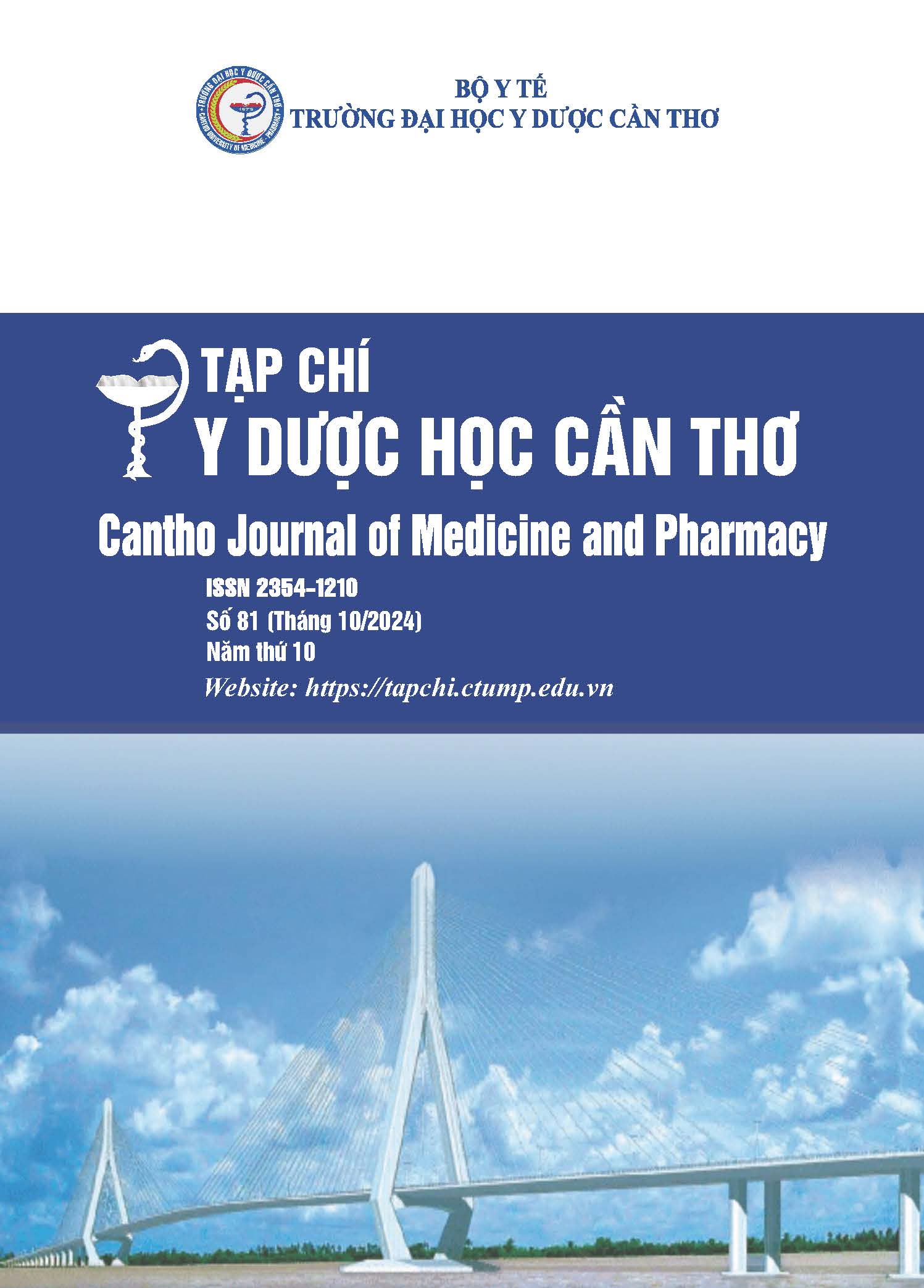JAW CHANGES AFTER INTERCEPTIVE ORTHODONTIC IN CLASS III MALOCCLUSION USING FACEMASK COMBINED WITH QUAD HELIX FOR CHILDREN IN THE AGE 7-14
Main Article Content
Abstract
Background: Class III malocclusion often causes many aesthetic and functional consequences if not treated properly. Most patients with class III malocclusion have problems with teeth, alveolar bone and jaw bone. For patients who are still in the growth stage, many authors recommend early treatment to change the jaw bone due to more growth, improving the difference in the jaw bone in the anterior-posterior direction. Objectives: To evaluate the jaw changes after interceptive orthodontic treatment in class III malocclusion using facemask combined with quad helix for children at the age of 7-14 years old at the Ho Chi Minh City Hospital of OdontoStomatology in 2023-2024. Materials and methods: The study evaluated the intervention before - after without a control group on 32 patients from 7 to 14 years old who came to the Ho Chi Minh City Hospital of Odonto-Stomatology. The children were evaluated at the time of starting treatment, the time of ending treatment, and changes in the bone before and after treatment. Results: The average age was 9.65 ± 1.4 years old. In which, the majority of the patients were female with 18 cases (56.2%). The average treatment time of the patients was 10.17 ± 1.94 months. The SNA angle increased by 2.57 ± 1.71⁰, (p < 0.001) and the N-A-Pog angle increased by 6.12 ± 3.91⁰ (p < 0.001). The SNB angle decreased: -0.95 ± 1.74⁰ (p=0.001). Conclusion: The facemask early interceptive orthodontic appliance has created positive changes on the maxilla and mandible of patients with class III malocclusion between the ages of 7 and 14 years old.
Article Details
Keywords
Facemask, Class III malocclusion, Early intervention orthodontic
References
2. Lutgart De Ridder et aL. Prevalence of Orthodontic Malocclusions in Healthy Children and Adolescents: A Systematic Review. Int. J. Environ. Res. Public Health. 2022. 19. 7446. DOI: 10.3390/ijerph19127446.
3. Zere E., Chaudhari P.K., Sharan J., Dhingra K., Tiwari N. Developing Class III malocclusions: challenges and solutions. Clin Cosmet Investig Dent. 2018. 10. 99-116. DOI: 10.2147/CCIDE. S134303.
4. Cao Minh Nhã Uyên. Đặc điểm khớp cắn của học sinh 12 tuổi và 15 tuổi tại Thành phố Hồ Chí Minh năm 2019. Tạp chí Y học Thành phố Hồ Chí Minh. 2020. tập 25 (2). 150-157.
5. Baccetti T. et al. Cephalometric variables predicting the longterm success or failure of combined rapid maxillary expansion and face mask therapy. American J Orthod Dentofacial Orthop. 2004. 126(1). 16-22. DOI: 10.1016/j.ajodo.2003.06.010.
6. Francesca Gazzani at al. Stress on facial skin of class III subjects during maxillary protraction: a finite element analysis. BMC Oral Health. 2019. 19(31), 1-6, DOI: 10.1186/s12903-019-0724-6.
7. DONG, Tham Khac et al. Effects of facemask therapy in the treatment of skeletal class III malocclusion in Vietnamese children. Medical Research Archives. 2022. 10 (11), 2022, https://doi.org/10.18103/mra.v10i11.3287.
8. Saadia M., Valencia R. Dentofacial Orthopedics in the Growing Child: Understanding Craniofacial Growth in the Management of Malocclusions. Wiley. 2022. 578-726, DOI:10.1002/9781119720218.
9. Nguyễn Thị Thu Phương. Nghiên cứu ứng dụng của lực kéo ngoài miệng để điều trị kém phát triển chiều trước sau hàm trên, Luận án Tiến sĩ Y học, Viện Đào tạo Răng Hàm Mặt - Đại học Y Hà Nội. 2007.
10. Weitao Liu, Yanheng Zhou, Xuedong Wang, Dawei Liu, and Shaonan Zhouc . Effect of maxillary protraction with alternating rapid palatal expansion and constriction vs expansion alone in maxillary retrusive patients: A single-center, randomized controlled trial. American Journal of Orthodontics and Dentofacial Orthopedics. 2015. 148 (4), 641 – 651, DOI: 10.1016/j.ajodo.2015. 04.038.
11. Turley P.K. Managing the developing Class III malocclusion with palatal expansion and facemask therapy. Am J Orthod Dentofacial Orthop. 2002. 122, 349-352, DOI: 10.1067/mod.2002.127295.
12. Sar C., Sahinoglu Z., Ozcipici AA., Uckand S. Dentofacial effects of skeletal anchored treatment modalities for the correction of maxillary retrognathia. Am J Orthod Dentofacial Orthop. 2014. 145, 41-54, DOI: 10.1016/j.ajodo.2013.09.009.


